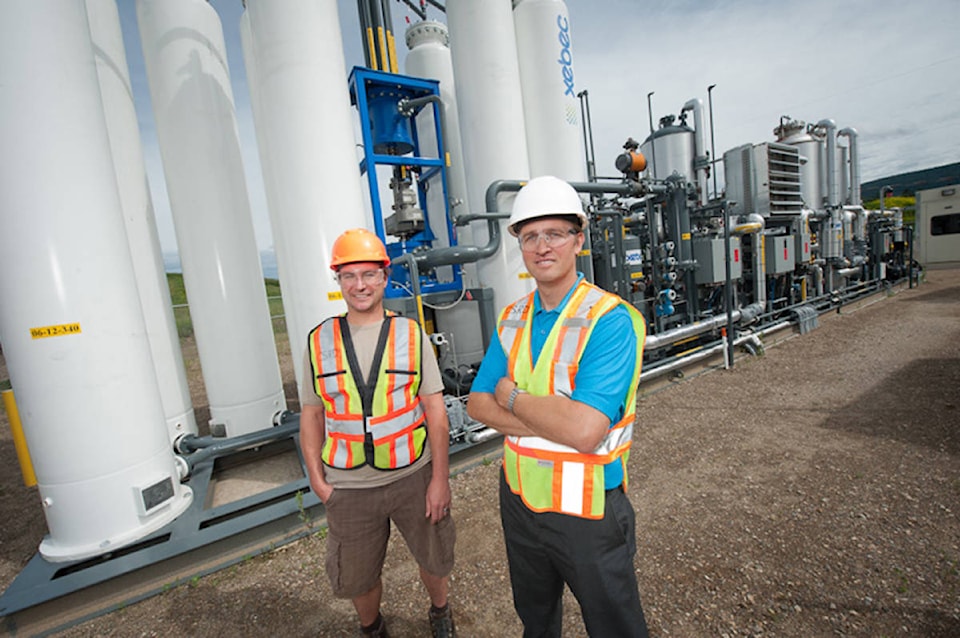Rather than being released into the atmosphere, methane gas is being recovered at the Salmon Arm Landfill and is helping to provide energy to hundreds of homes.
Ben Van Nostrand, Columbia Shuswap Regional District team leader of environmental health, says that by signing on to the British Columbia Climate Action Charter, the regional district committed to becoming carbon neutral by 2012.
Closing Phase 1 of the Salmon Arm landfill in 2011 presented an ideal opportunity to install a biogas plant in collaboration with Terasen Gas (now known as Fortis BC).
The biogas plant collects methane generated in the landfill and converts it to carbon dioxide. As methane is a 23 times more potent greenhouse gas than carbon dioxide, for each tonne of methane converted to carbon dioxide (CO2), 23 equivalent tonnes of carbon dioxide are removed from the environment.
Related: CSRD wants commercvial paper and packaging accepted for recycling
Because the Salmon Arm landfill is small and not yet regulated by the Ministry of Environment’s Landfill Gas Regulation, CSRD is allowed to collect and sell carbon credits.
“Once we’re regulated, we won’t be able to sell, but that’s key to why we did the project. By volunteering to put in these collection and methane conversion treatment units there is an economic benefit of just over $100,000 per year,” Van Nostrand says.
“Since the beginning of the program in 2011, it’s fair to say the CSRD has averaged 7,300 tons of CO2 equivalents annually; that’s the amount we’re removing from the atmosphere on average.”
So far, that has netted the regional district some $727,068.
The other piece of the puzzle is the heating of 300 to 500 homes. In 2010 Terasen was seeking partners for biogas projects and the CSRD project fit the bill, says Van Nostrand.
The gas company supplied the necessary equipment to remove the biogas, clean it up and add it to the pipeline.
That process also provides the CSRD with revenue. From a mere $4,391 in 2011, that revenue stream has steadily increased to a total of $20,000 from Fortis in 2017.
“Fortis BC has been a great partner in that they have spent a lot of time, money and resources making their end of the project work,” says Van Nostrand. “In 2018, I think we operated 96 per cent of the year. They have been great in terms of dedicating staff and resources to make sure their plant is operational.”
The additional work to convert the methane was originally estimated to be in the neighbourhood of $500,000, a capital investment that has already been repaid.
Related: Agreement to purchase property for Salmon Arm Landfill extended
The landfill is not regulated by the province because it generates less than 1,000 tonnes of methane per year.
“The key in that is if we can stay under the threshold, we will continue to be allowed to receive revenue,” Van Nostrand says, pointing out current projections indicate the Salmon Arm landfill would become regulated in 2040.
But, an enthusiastic Van Nostrand says that the City of Salmon Arm’s planned collection of organic waste, due to get underway in summer 2019 could keep the landfill under the 1,000-tonne threshold for an additional 20 years.
“The majority of the gas is coming from the closed landfill but the CSRD is being progressive in that we’re installing gas infrastructure as we complete phase two in order to be able to collect gas sooner,” Van Nostrand says.
@SalmonArm
barb.brouwer@saobserver.net
Like us on Facebook and follow us on Twitter
